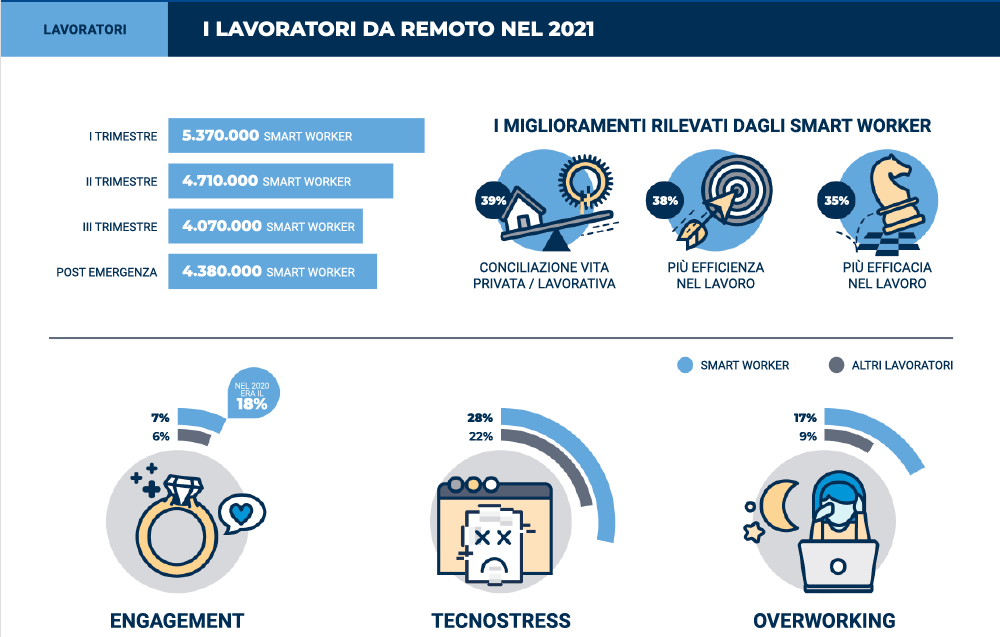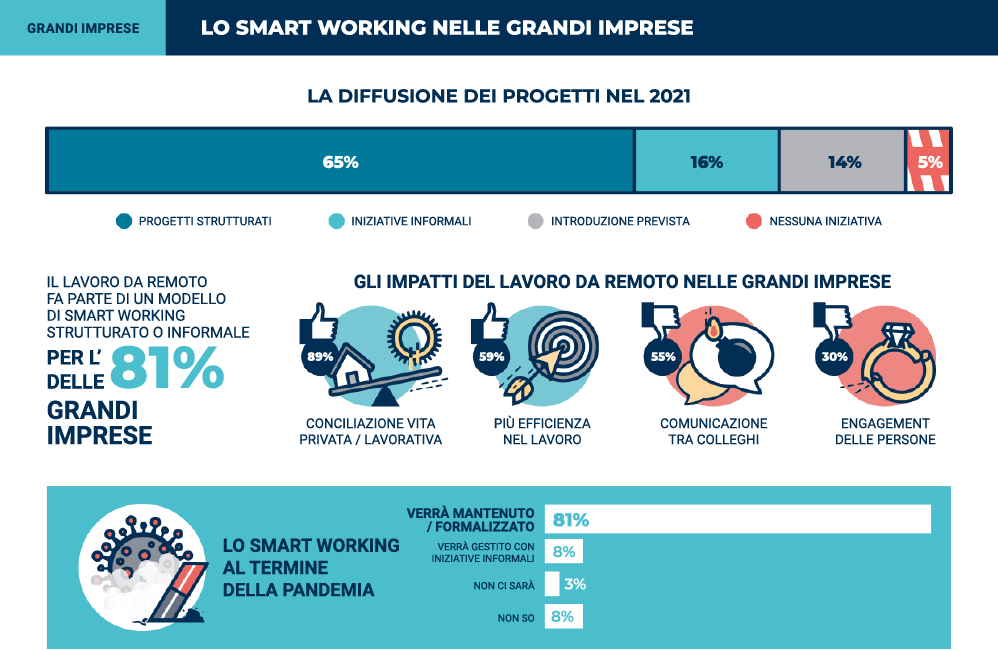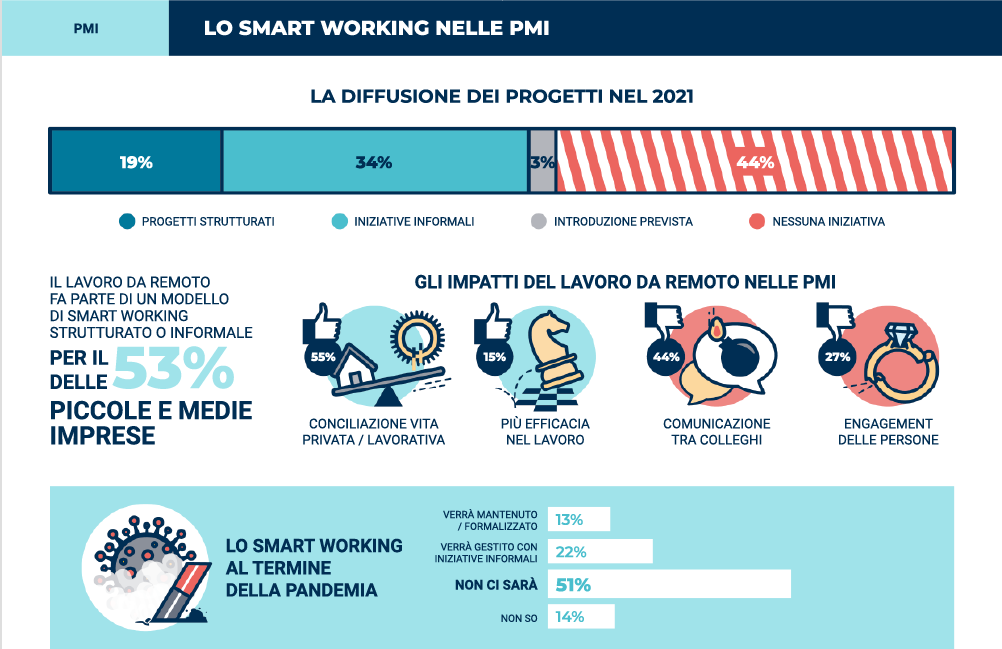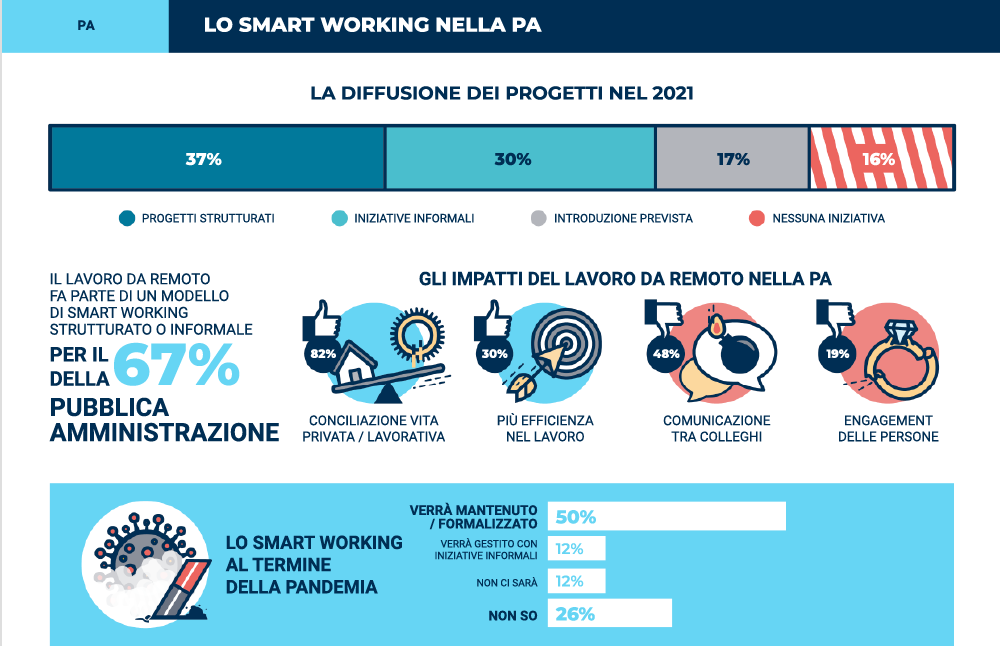
The gradual return to the office does not mark the decline of Smart Working: as many as 89% of large companies and 62% of PAs will continue to apply Agile Working.
The scenario emerging from the results of the 2021 survey by Osservatorio Smart Working of School of Management of Politecnico di Milano confirms that even in the post-pandemic, smart working is destined to grow.
In September 2021, smart workers in Italy were 4.07 million (down from the 5.37 million imposed by the emergency last March), but will increase in the next period to 4.38 million, with hybrid formulas that set an average of 3 “smart” days in large companies and 2 in Public Administrations.
The OSW 2021 survey confirms that Smart Working methods will return hybrid, aimed at a greater balance between in office and remote work.
Agile Working will remain or will be introduced in 89% of large companies (where both structured and informal projects will increase) in 62% of PAs, and in 35% of.
SMEs.
51% of SMEs plan to abandon smart working. Among the large companies that have defined or are defining a smart working project, 40% say that the project was not present before the emergency and that the pandemic was the occasion to introduce it (85% among PAs) .
Advantages and Disadvantages of Smart Working
Both smart workers and organizations highlight a strong increase in the work-life balance.
39% of smart workers report an improvement in work-life balance and an increase in productivity (73%); increased trust between managers and collaborators (32%) and communication between colleagues (31%), but denounces the disadvantage of technostress (28%) and overworking (17%).
Forced smart working has also had negative effects on engagement: the involvement of the smart worker has dropped from 12% to 7%.
The point of view of organizations is different: even large companies and PAs show an improvement in effectiveness and efficiency.
But the aspect considered to be the most negative is the communication between colleagues, which worsened for 55% of large companies, 44% of SMEs and 48% of PAs.
How the workplace changes
55% of large companies and 25% of public administrations have started modifying spaces to adapt them to the new ways of working.
Most organizations will not intervene on size but on the reorganization of work environments. 33% of large companies, however, foresee a reduction in space. Only 18% of PAs hypothesize the need to increase space.
Social and environmental benefits
According to large companies, the large-scale application of Smart Working favors the inclusion of people who live far from their workplace (81%), parents (79%) and those who take care of the elderly and disabled (63 %).
The ability to work an average of 2.5 days/week from home will lead to significant savings in time and money: 123 hours a year and 1,450 euros less for each worker who uses the car to go to the office.
In terms of environmental sustainability, it can be estimated that the application of Smart Working at the expected post-pandemic levels will lead to an annual reduction in emissions of approximately 1.8 million tons of CO2 (equal to the carbon dioxide absorbed by 51 million trees ).
These data cannot be overlooked in political choices.




















